Japanese bedroom design embodies simplicity, tranquility, and a seamless connection with nature. It's all about creating a serene sanctuary where every element has its place and purpose. To achieve this, start with a minimalist approach�think low-profile furniture like a tatami mat or a platform bed that maintains a close-to-the-ground aesthetic. Utilize a calming color palette dominated by neutral hues such as earthy browns, soft whites, and muted greens, which evoke a sense of peace and balance. Incorporate natural materials like wood and bamboo, adding warmth and elegance while echoing the beauty of the natural world. Sliding shoji screens not only save space but also offer a traditional touch, creating versatile spaces bathed in diffused light. Embrace the principles of Zen by eliminating clutter and focusing on functionality over excess ornamentation. To enhance the sensory experience, integrate elements such as a small indoor plant or a stone water feature, adding to the room's meditative quality. Ultimately, a Japanese bedroom should be an oasis of calm where minimalist design and nature harmonize to promote rest and relaxation.
Tatami Mats
Creating a Japanese-inspired bedroom with tatami mats offers a minimalist and serene atmosphere. Tatami mats, traditionally made from rice straw and rush grass, provide a natural, comfortable flooring option that also adds an authentic touch to the space. Consider covering the entire floor with these mats for a cohesive look, or use them as a soft platform beneath a low bed frame. Enhance the simplicity by keeping furniture to a minimum, perhaps just a low table or futon, allowing the tatami's texture to stand out as the room's focal point.
Shoji Screens
Shoji screens are a classic element of Japanese bedroom design, offering both functionality and style. Made from translucent paper over a wooden frame, they allow natural light to gently filter into the room, creating a calming atmosphere. These screens can be used to divide space, provide privacy, or serve as sliding doors or window coverings. By incorporating shoji screens, you can add an authentic touch of Japanese culture to your bedroom while maximizing the use of light and space.
Futon Beds
Japanese bedroom design often features futon beds, which can easily be folded and stored away during the day to maximize space. These beds typically rest on tatami mats, providing a traditional look and a comfortable sleeping surface. Opt for neutral colors and minimal decorations to maintain the serene and clutter-free atmosphere that Japanese design embraces. Adding a shoji screen or simple wooden accents can enhance the authenticity and tranquility of the room.
Zen Garden
Creating a Zen garden in your bedroom can add a serene and calming atmosphere. Focus on using natural elements like stones, sand, and simple plants to bring the outdoors in. Arrange these elements in a small tray or section of your room, using a rake to draw patterns in the sand for added tranquility. Keep the space minimalistic with neutral colors and soft, natural lighting to enhance the peaceful vibe.
Low Wooden Furniture
Japanese bedroom design often features low wooden furniture, creating a serene and minimalist atmosphere. A low platform bed made of natural wood provides a solid focal point while adhering to traditional aesthetics. Complement the bed with a simple wooden floor and low-standing side tables to maintain the room's open, airy feel. Add a few essential pieces like a wooden bench or a low dresser to complete the tranquil setting, ensuring that each item serves a purpose to preserve the room's tidy and relaxed vibe.
Kokedama Plants
Incorporating kokedama plants into a Japanese-style bedroom can create a calming, natural atmosphere. These moss-covered plant balls add a touch of greenery without taking up much space. Hang them from the ceiling or place them on shelves to bring a fresh, serene vibe to the room. Not only are they easy to care for, but they also offer a unique aesthetic that aligns well with minimalist Japanese design.
Sliding Doors
Sliding doors, or shoji, are a staple in Japanese bedroom design, offering both functionality and aesthetics. They save space compared to traditional hinged doors, making rooms look larger and more open. These doors usually feature a wooden frame with translucent paper, allowing soft, natural light to filter through. To enhance the tranquil vibe, choose frames with simple, clean lines and consider using natural wood finishes to maintain a calm and minimalist atmosphere.
Minimalist Aesthetic
Japanese bedroom design is all about simplicity and tranquility. Start by selecting a neutral color palette with whites, creams, and light browns to create a calming atmosphere. Opt for low furniture, like a platform bed and a simple nightstand, to maintain an open floor space. Keep decorations minimal, utilizing a few well-chosen pieces like a bamboo plant or a shoji screen to add a touch of nature and elegance.
Bamboo Accents
Bamboo accents can bring a serene and natural feel to your Japanese-inspired bedroom. Consider using bamboo blinds for your windows to filter light softly, creating a calming atmosphere. A bamboo headboard or room divider can add texture and a touch of elegance to the space. You might also incorporate bamboo flooring or furniture, like a bench or side table, to enhance the room's earthy aesthetic. These elements not only look beautiful but also promote a sense of tranquility that is central to Japanese design.
Wabi-Sabi Elements
Wabi-Sabi is all about embracing imperfection and simplicity in your Japanese bedroom design. Start with a neutral color palette using earthy tones like beige, taupe, and soft greens to create a calming atmosphere. Incorporate natural materials such as wood and stone to give the room an organic feel. Add some handmade or vintage items for a personal touch, and keep the decor minimal to let the beauty of imperfection shine. This approach creates a peaceful, harmonious space that reflects the tranquil essence of Wabi-Sabi.
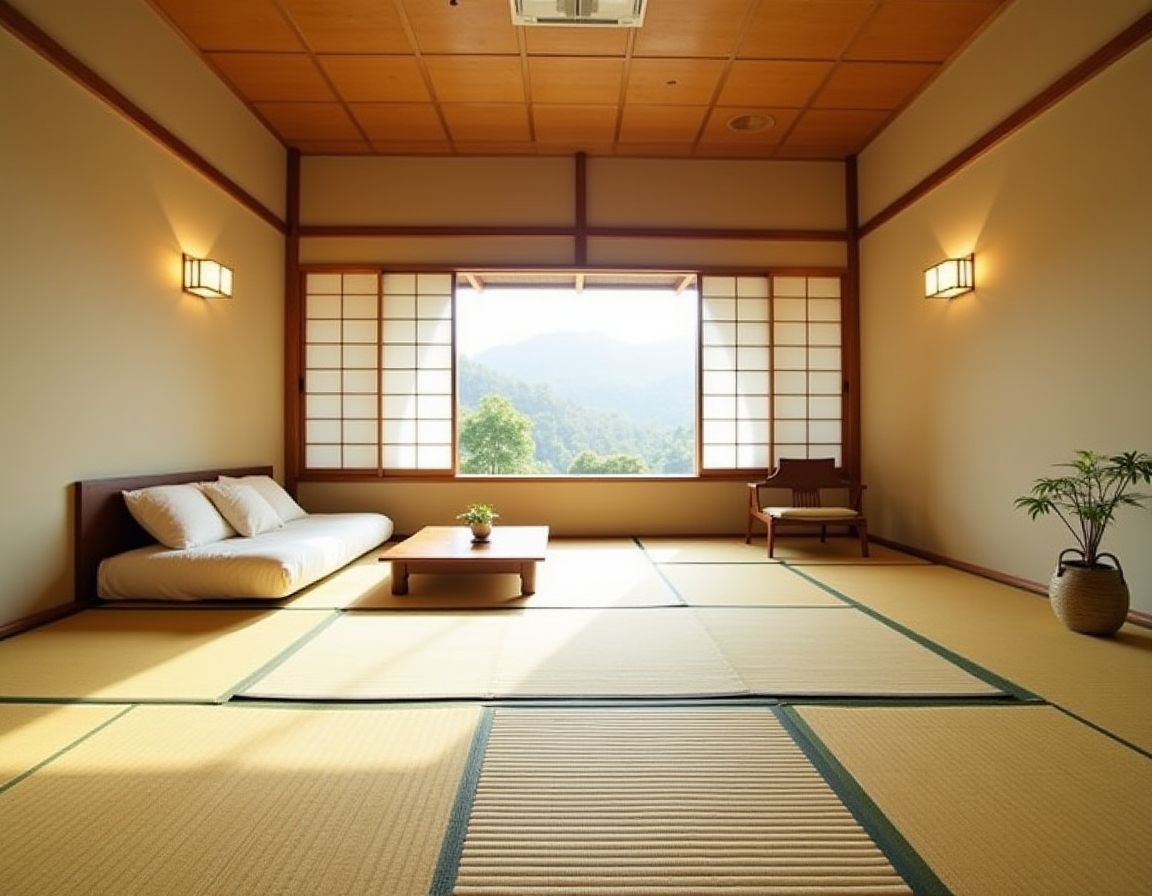
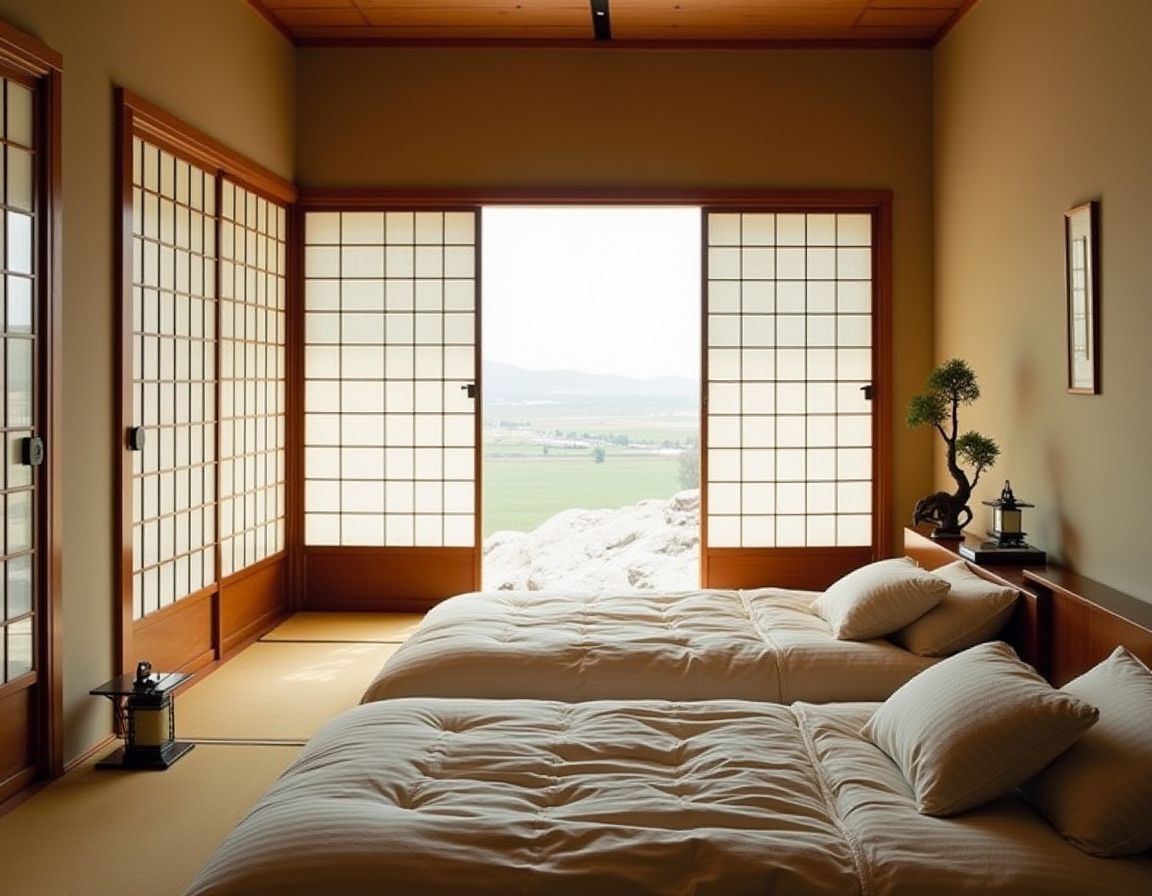

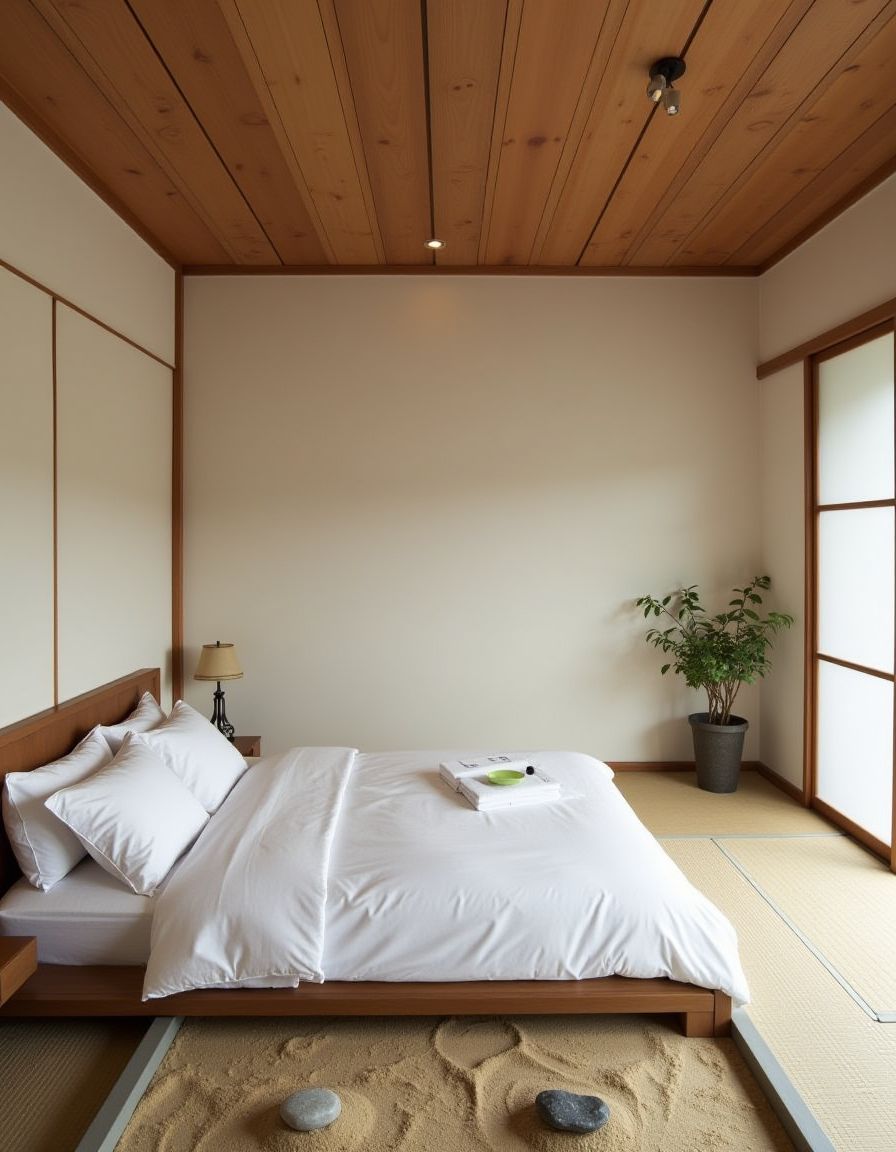
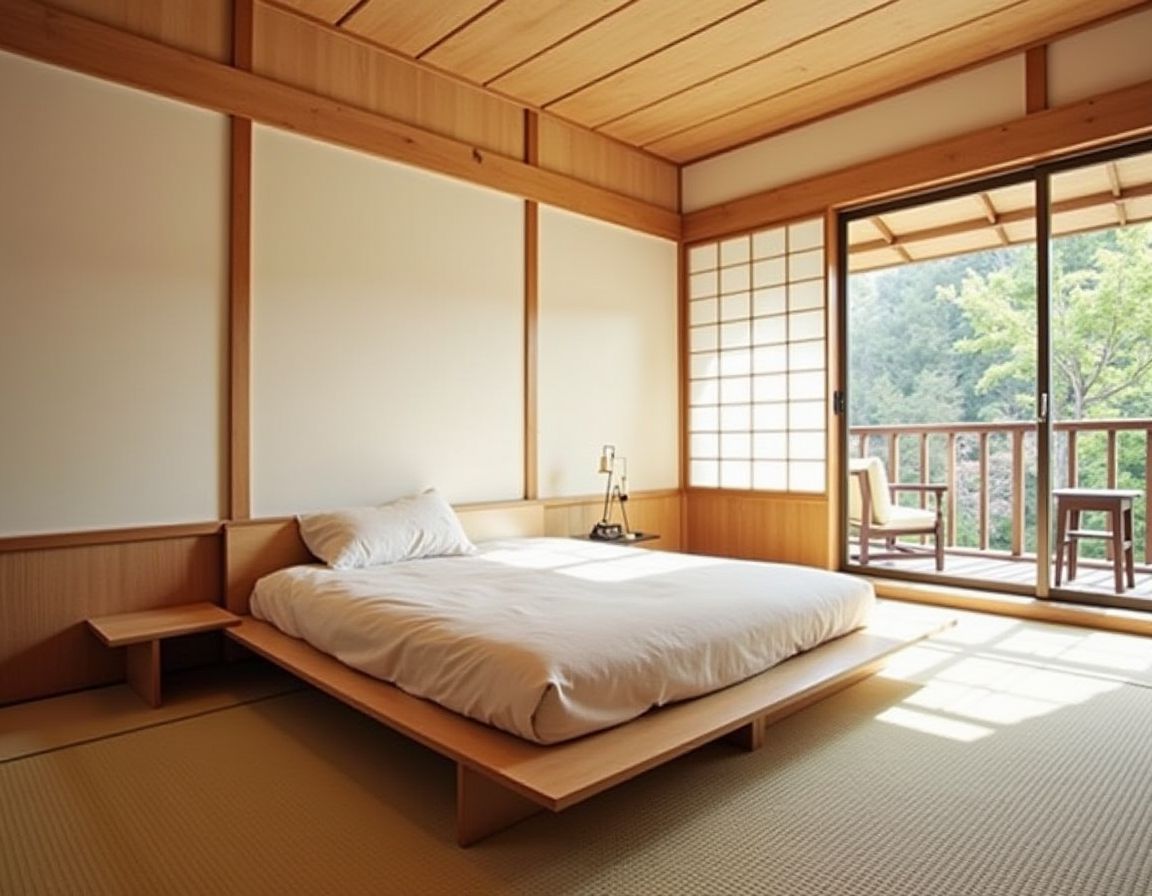
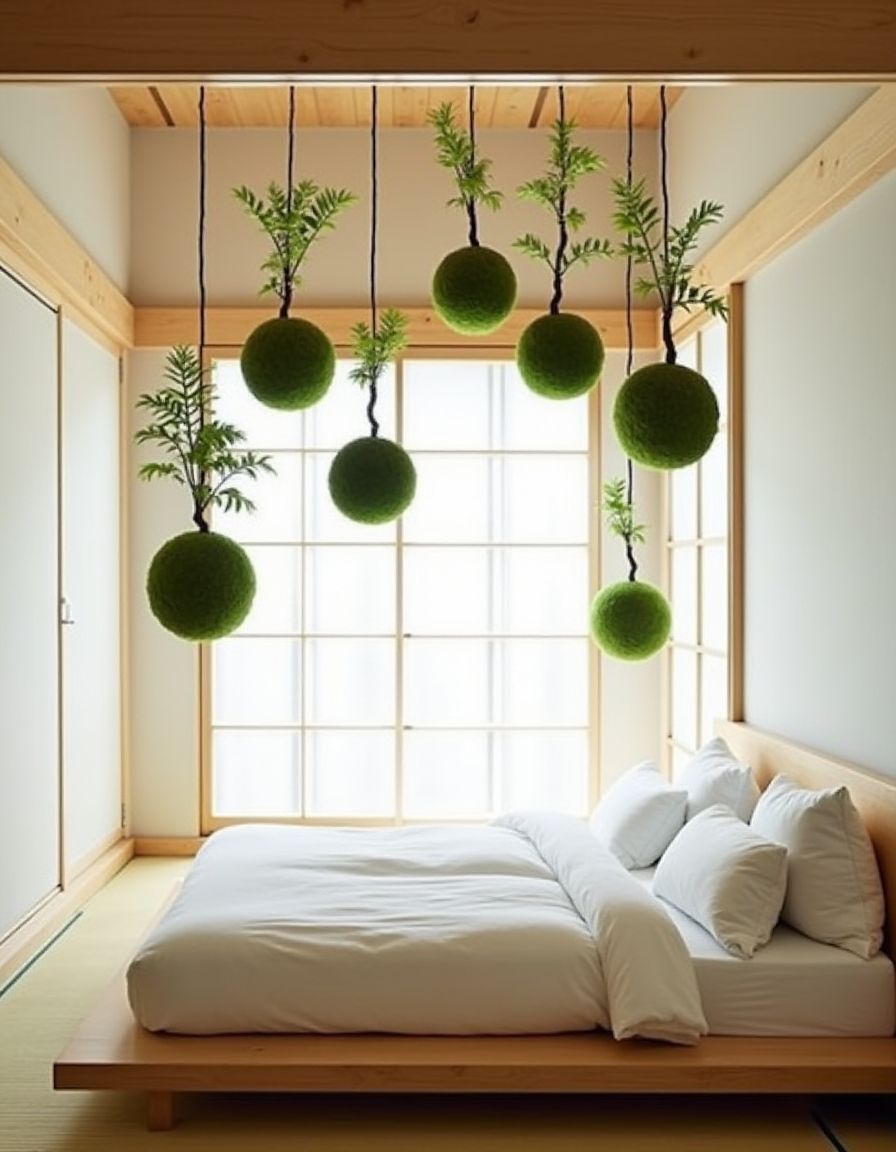
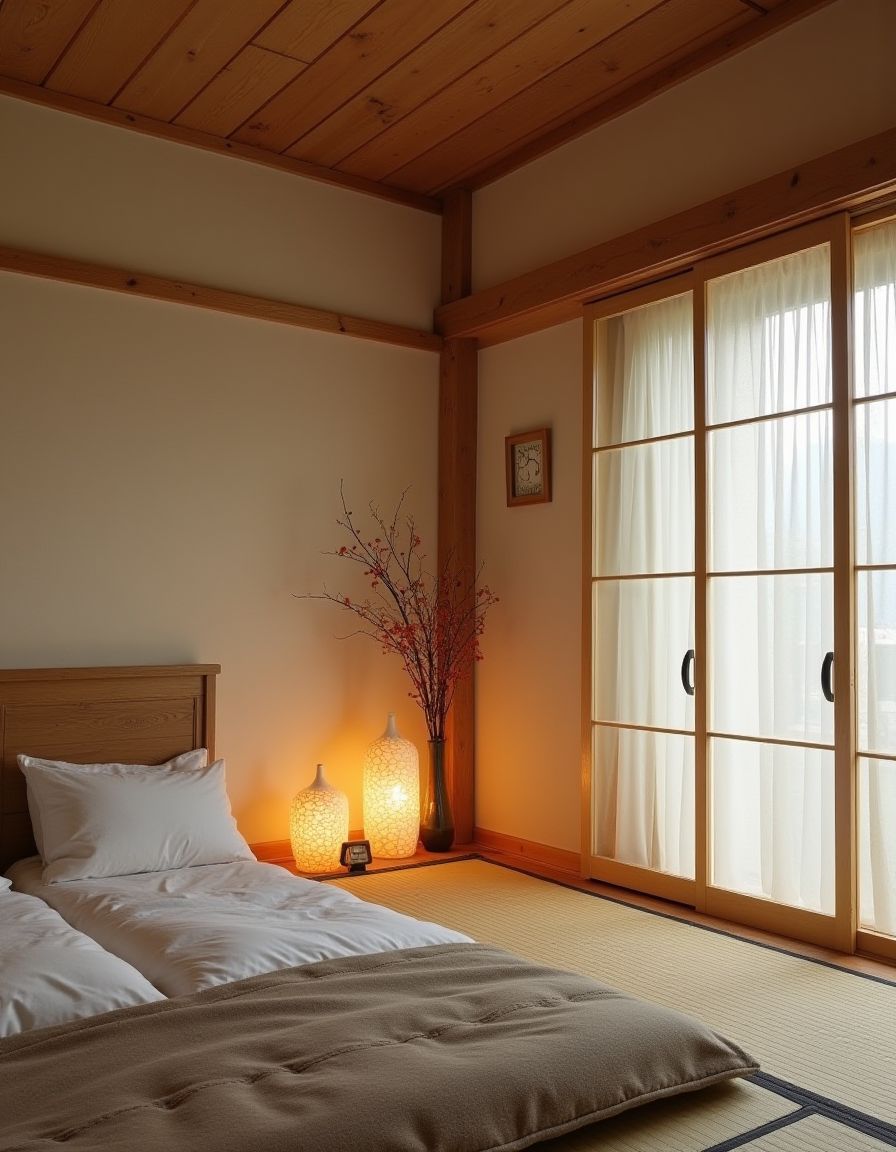

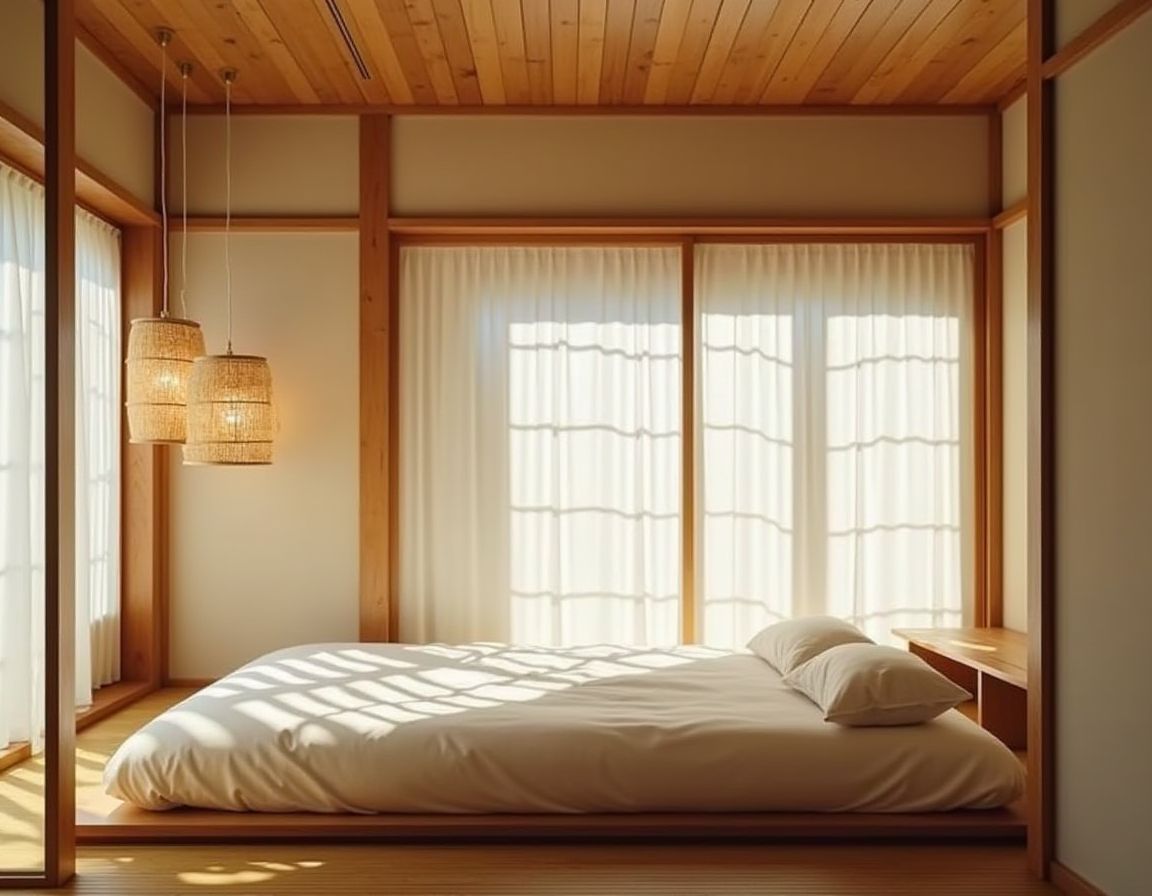
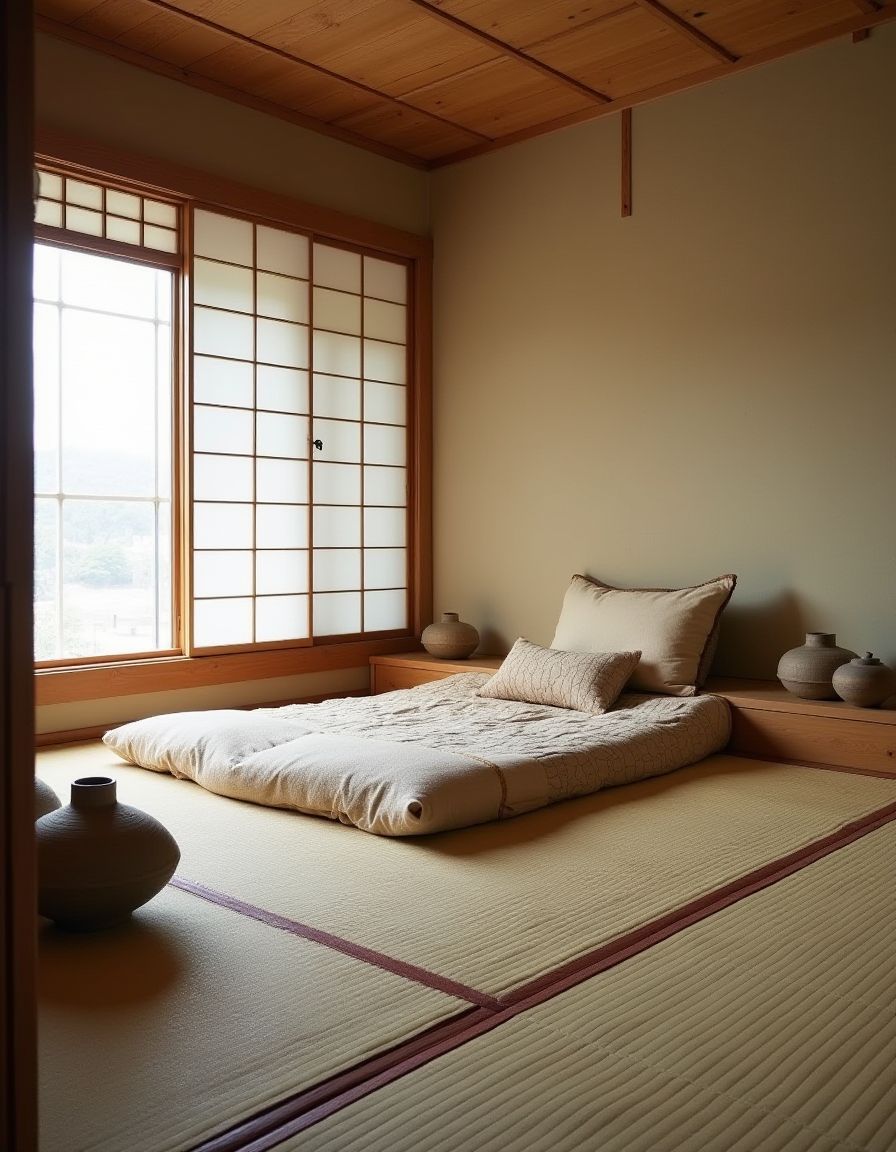




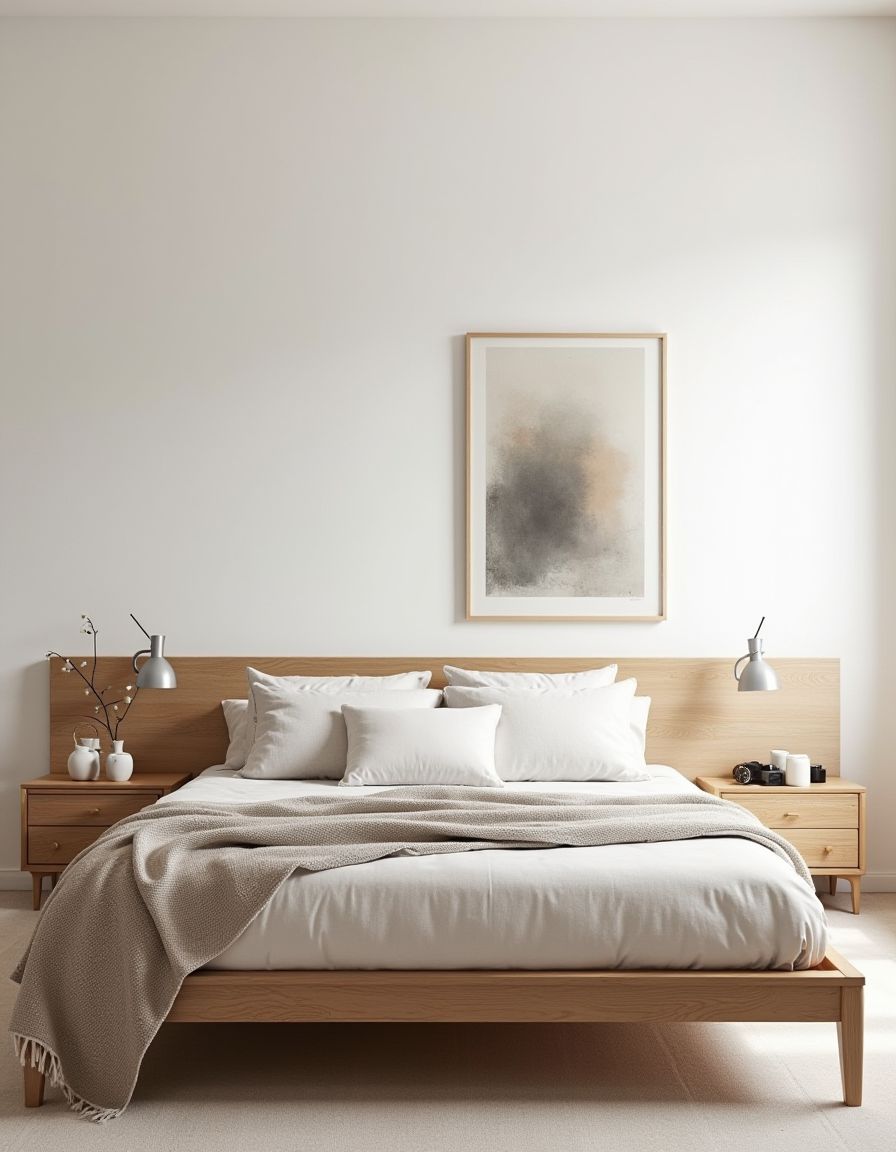





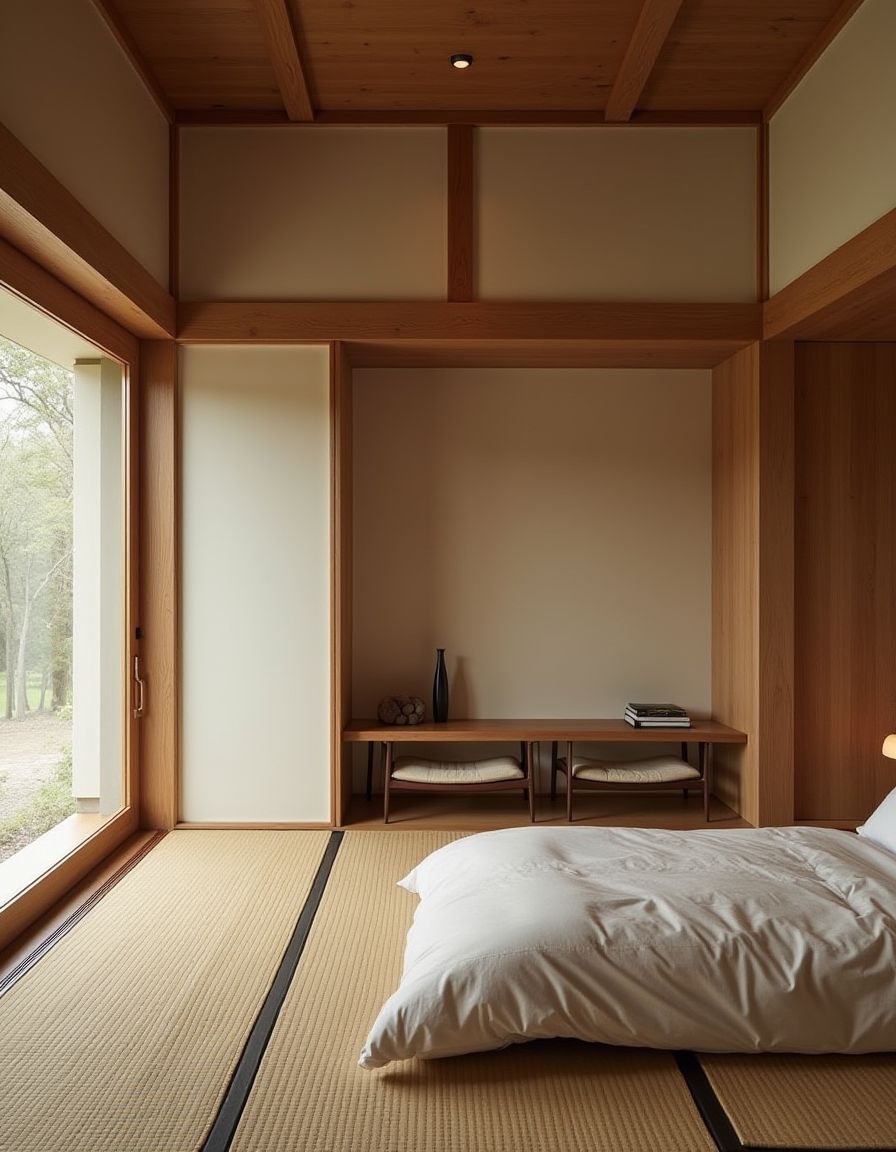
Leave a Reply
Your email address will not be published.